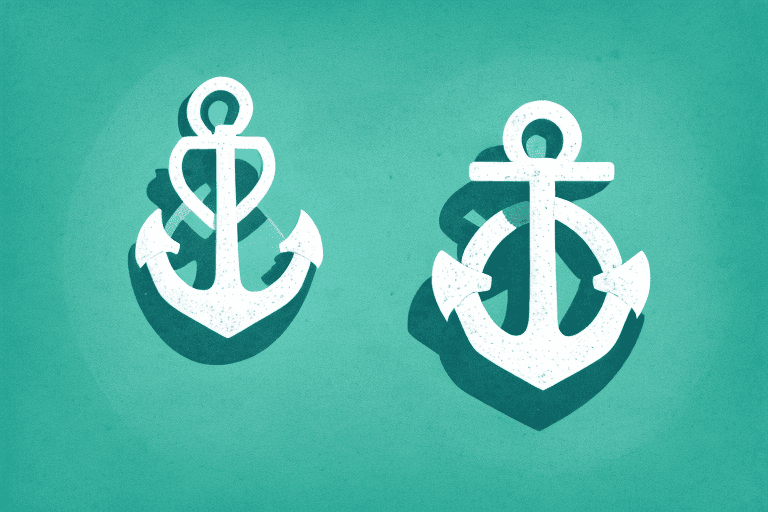In the competitive world of business, setting the right price for your products or services is crucial. The price you choose will not only impact your profitability but also influence customer perception and purchase decisions. This is where the anchoring effect comes into play. By understanding the psychology behind anchoring and implementing appropriate pricing strategies, you can optimize your pricing and maximize your business’s success.

Why is it important to set the right price?
It is important to set the right price because it directly impacts a company’s profitability. Pricing too high may deter potential customers, while pricing too low can leave money on the table. Finding the optimal price point requires careful consideration of factors such as production costs, market demand, competition, and customer perception.
However, the importance of setting the right price goes beyond financial considerations. Price signals value. Customers often associate higher prices with quality and prestige. When a product is priced higher, it creates an impression of exclusivity and luxury. This psychological association can be a powerful tool for businesses looking to position themselves as premium brands.
On the other hand, low prices may raise questions about the product’s quality or brand credibility. Consumers may wonder if the low price is indicative of subpar materials or a lack of attention to detail. This perception can be detrimental to a company’s reputation and may lead potential customers to seek alternatives.
Furthermore, the right price helps position your product or service in the market. A well-priced offering can differentiate you from competitors and attract your target audience. For example, if you position your product as a high-end luxury item, setting a premium price can reinforce that image and appeal to a specific customer segment seeking exclusivity and status.
Conversely, if you aim to target price-sensitive customers, a lower price point can make your product more accessible and appealing. By understanding your target market and their willingness to pay, you can strategically set the price to align with their expectations and maximize your chances of success.
It is also important to consider the long-term implications of pricing decisions. While setting a lower price may attract customers in the short term, it can create challenges in the future. Once customers become accustomed to low prices, it can be difficult to raise them without facing resistance or losing market share.
Understanding the Psychology Behind Anchoring
The anchoring effect refers to the psychological bias where individuals rely heavily on the first piece of information they receive when making decisions. In the context of pricing, this means that the initial price a customer encounters becomes their reference point for evaluating subsequent prices. This cognitive bias can significantly impact purchasing decisions, making it crucial for businesses to make a favourable first impression in terms of price.
The Anchoring Effect in e-commerce refers to how the initial price that customers encounter for a specific product category can significantly impact their price expectations and their readiness to pay for other products within that category. When your online store introduces a new product line, the first price that you set will serve as the reference point against which customers will evaluate and compare similar products. This presents an opportunity to strategically position products and exert influence over sales.
When it comes to anchoring, it is important to understand the underlying mechanisms that drive this cognitive bias. One explanation is that our brains tend to rely on heuristics, or mental shortcuts, to simplify decision-making processes. Anchoring serves as one of these shortcuts, allowing us to quickly assess the value of a product or service based on the first price we encounter.
Research has shown that anchoring can have a powerful influence on consumer behaviour. In a classic study conducted by psychologists Amos Tversky and Daniel Kahneman, participants were asked to estimate the percentage of African countries in the United Nations. Before making their estimates, participants were randomly presented with either a high or low anchor number. The study found that participants who were exposed to a high anchor provided significantly higher estimates compared to those who were exposed to a low anchor.
Businesses can leverage the anchoring effect to their advantage by strategically setting their initial prices. By starting with a higher price point, they can anchor customers’ expectations and make subsequent prices seem more reasonable or even discounted. This technique is commonly used in sales and marketing, where businesses often display the original price crossed out next to the discounted price to create a perception of value.
When a new product line is launched on your online store, the initial price acts as a benchmark for customers to compare other similar products. This can be strategically utilized to position products and drive sales. The Anchoring Effect in e-commerce demonstrates how the first price encountered by customers impacts their price expectations and willingness to pay for related products. Setting the right initial price presents an opportunity to shape customer perceptions and influence purchase decisions. Leveraging the Anchoring Effect can be a powerful tool in driving sales and maximizing profitability.
However, it is important for businesses to be ethical in their use of anchoring. Misleading or deceptive anchoring techniques can erode trust and damage a company’s reputation. Customers who feel manipulated may be less likely to make repeat purchases or recommend the business to others.
Understanding the psychology behind anchoring can also help consumers make more informed decisions. By being aware of this cognitive bias, individuals can critically evaluate the initial price they encounter and consider other factors before making a purchase. Comparing prices from different sources, reading reviews, and assessing the overall value of a product or service can help consumers avoid falling prey to anchoring effects.
What are the procedures for setting the right price?
Step 1: Research Market and Competitors
Before setting a price, you must thoroughly understand your market and competitors. Evaluate their pricing strategies, identify gaps in the market, and assess how your product or service stands out from the competition.
Step 2: Determine the Value of Your Product or Service
Understanding the value proposition of your offering is crucial in setting the right price. Consider the unique features, benefits, and advantages your product or service provides compared to alternatives. Clearly communicate this value to potential customers.
Step 3: Establish a Reference Point
As mentioned earlier, the anchoring effect relies on establishing a reference point for customers. Set an initial price that is fair and justifiable, creating a positive perception of value without alienating your target market.
Step 4: Present Different Price Options
Offering customers a range of price options can help anchor their expectations and increase the likelihood of a purchase. This could involve tiered pricing based on features or subscription plans with varying benefits.
Step 5: Highlight the Value and Benefits
When communicating your price to customers, make sure to focus on the value and benefits they will gain by choosing your product or service. Emphasize how your offering solves their problems or meets their needs better than alternatives.
Examples:
- Apple’s Product Launches: Apple has mastered the art of leveraging the anchoring effect during their product launches. By announcing premium-priced models first, they anchor their customers’ expectations to a higher price point. Subsequently, when they introduce more affordable options, customers perceive them as reasonably priced or even as a “deal” compared to the higher-priced models. Find further information on Apple’s pricing strategy to gain insights into setting the right price for your products.
- Real Estate Listings: Real estate agents strategically set the right price for properties to maximize their value. By using anchoring techniques, they list properties at a price that influences buyers’ perceptions of value. This allows agents to create a starting point for negotiations and potentially achieve higher sale prices. Additionally, agents consider market conditions, comparable sales data, and property features to determine the optimal listing price. Through their expertise and market knowledge, real estate agents play a crucial role in helping business owners set the right price for their properties and achieve successful transactions.
Application
The anchoring effect can be applied to various pricing strategies and scenarios. Let’s explore some common applications:
- Premium Products: Introduce your most premium product first at a higher price. This sets a high anchor, making other products in the range seem more affordable.
- Sales and Discounts: Display the original price next to the discounted price. The original price will serve as an anchor, making the discount appear more significant and enticing.
- Bundling: When selling product bundles, show the total value of individual items first before revealing the bundle price. This higher initial total sets an anchor, making the bundle deal more attractive.
Additional Tips for Setting the Right Pricing Strategy
Consider Perceived Value: This means understanding how your target audience perceives the value of what you offer and pricing accordingly. Implement effective pricing strategies such as cost-plus pricing or value-based pricing to optimize your pricing structure. Additionally, consider offering incentives and discounts to attract customers and create a competitive edge in the market.
Utilize Pricing Strategies: Consider utilizing various pricing strategies to set the right price for your products or services. Conduct market research to understand your target audience and their purchasing behaviour. Analyze your competitors’ pricing to ensure you are competitive while still maintaining profitability. Evaluate your costs and expenses to determine your desired profit margin. Lastly, regularly review and adjust your prices based on market trends and customer feedback to stay relevant and profitable in your industry.
Offer Incentives and Discounts: Offering incentives and discounts is a key strategy for setting the right price in your business. By providing incentives, such as a limited-time offer or a loyalty program, you can attract more customers and encourage repeat business. Discounts can also be effective in driving sales, especially during slow periods or to move inventory quickly. Additionally, consider offering bundle deals or package pricing to increase the perceived value of your products or services. Remember to analyze your costs and profit margins when determining the extent of your discounts or incentives to ensure they are sustainable for your business in the long run. By implementing these additional tips, you can optimize your pricing strategy and drive customer engagement.
Conclusion
Applying the Anchoring Effect in setting the right price involves thoughtful pricing strategies to create favourable price perceptions and drive sales. By understanding and leveraging this psychological principle, you can guide customers’ value perceptions and influence their purchasing decisions.
Utilizing the Anchoring Effect when determining the appropriate price requires careful implementation of pricing strategies aimed at cultivating positive price perceptions and stimulating sales. By comprehending and harnessing this psychological principle, you can steer customers’ perceptions of value and exert influence over their buying choices.
Discounts and bundle deals are effective in driving sales and increasing perceived value. It is crucial to analyze costs and profit margins to ensure sustainability. Implementing these tips can optimize pricing strategy and engage customers. Understanding and leveraging the Anchoring Effect can guide value perceptions and influence purchasing decisions.
- Harvard: “The Anchoring Effect and How It Can Impact Your Negotiation”
- FasterCapital: “Leveraging Anchoring In Your Pricing Strategy”
- Wikipedia: “Anchoring effect”
- The Guardian: “In praise of … Daniel Kahneman”

